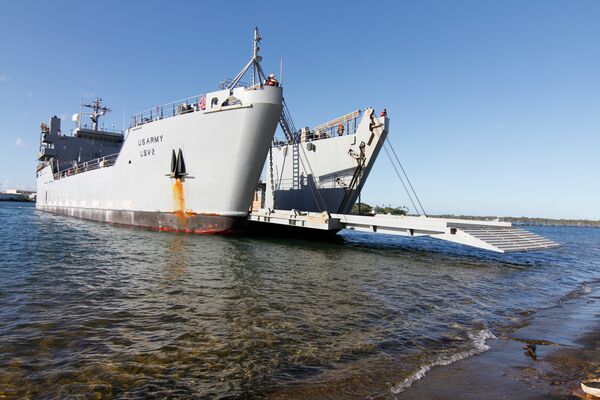
The US Army Frank S Besson (LSV 1)-class logistics support vessel CW3 Harold A Clinger , shown here at Ford Island, Hawaii, in 2023, is part of an ageing fleet the army needs to maintain. (US Army)
A steep drop in mission-capable watercraft is keeping the US Army from effectively performing important logistics missions as the service is beginning to relay more on that fleet, according to a recent US General Accountability Office (GAO) report.
“The fully mission-capable rate for watercraft has steadily declined, from 75% in 2020 to less than 40% thus far in 2024,” the GAO said in its report, Army Watercraft Actions Needed to Optimize Small but Critical Fleet , released on 16 October to the Housed Armed Services Committee during the Association of the United States Army (AUSA) conference in Washington, DC.
The need for army watercraft operations has climbed as the available ships have dropped, the GAO noted.
“The army has increased its use of watercraft to support the priorities of recent national security strategic guidance,” the GAO reported. “Specifically, requirements for army watercraft to support exercises and transport missions increased from fiscal year (FY) 2023 through 2025. In addition, according to officials, requirements for watercraft use in combatant command plans for the Indo-Pacific theatre are under development and expected to increase.”
Need increase
Army watercraft requirements to support exercises and transport missions in the Indo-Pacific increased in FY 2024 and FY 2025 compared with FY 2023 levels, according to GAO's analysis of army watercraft mission requirements.
Looking to read the full article?
Gain unlimited access to Janes news and more...







